Michigan Grayling Only a Memory
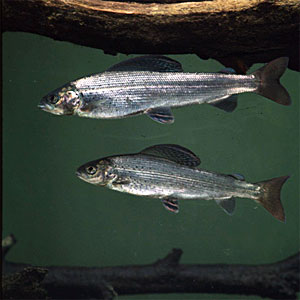
Two Arctic Grayling swimming
This is the sad-but-true story of the Michigan Arctic Grayling. Once a native fish species in Michigan, grayling were extirpated from Michigan waters by the 1930s.
Michigan’s grayling were described as being a beautiful fish, slate blue in color. They sported a distinctive, graceful sail-like dorsal fin. In the 19th century, northern Michigan’s streams literally teemed with grayling. Lore has it that anglers from that time could sometimes catch three fish with one cast. Early historical accounts tell of grayling that “lay like cordwood in the AuSable River.”
With Michigan their only Midwestern home, Michigan Grayling (Thymallus arcticus) were descendants of fish that thrived in our state’s waters after the glaciers of the Ice Age receded. Grayling were closely linked with the north woods, and the image of beauty and romance attached to Michigan’s then-untamed wilds, associated with unspoiled wilderness.
Some argue Michigan’s grayling population was doomed anyway. The most evident factor in the species’ disappearance was the cutting of Michigan’s vast virgin forest in the 1800s. The wholesale harvest of trees brought with it logjams in the streams, as the wood floated to mills for processing. The logjams scoured the streams, all but destroyed grayling spawning areas.
Cutting the trees down also caused serious silting problems that literally choked the streams in which the grayling lived. Those streams, lacking the canopy shade the bank-side trees provided, soon became unsuitably warm for the grayling. The delicate balance of nature tipped and the little grayling, unable to adapt to the large-scale changes facing it, began to disappear.
Serious over fishing also contributed to the grayling’s demise. Civil War-era accounts tell of people harvesting grayling by the basketfuls and hauling them home by the wagonload. There were no established limits, and catch and release was practically unheard of.
Another factor which contributed to the grayling’s demise was the introduction of non-native trout species. The non-aggressive grayling couldn’t compete with non-native planted fish such as the European brown trout and rainbow trout.
Sadly, Michigan’s native grayling population vanished. The last specimens were taken in the 1930s as part of a last-ditch effort to rescue the fish and keep it swimming our state’s waters.
Not all of North America’s grayling have suffered the same fate as Michigan’s population. These exciting fish can still be found in small pockets of the western United States and in Alaska. They actually thrive in the western province waters of Canada.
A number of attempts have been made to re-establish the grayling in Michigan using fish from these other populations. The most recent attempt was in the 1980s. Though these attempt all failed a proposed initiative was announced in 2016 using lessons learned and a different source of grayling to plant starting with the Manistee River watershed in the next few seasons.
Chances are very remote at this time that you will ever catch a grayling in Michigan, but if you do, you must return it to the water immediately! If and when grayling are reestablished in Michigan, you’ll need to know whichever regulations are adopted at that time for fishing for them. Expect it to be a number of years before that becomes a reality.
Information for this article was pulled from the Michigan Department of Natural Resources at: http://www.michigan.gov/dnr/0,4570,7-153-10364_18958-53612–,00.html

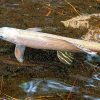


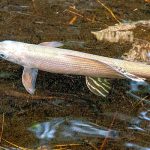

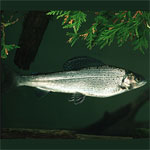
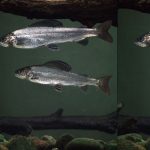


Connect
Connect with us on the following social media platforms.